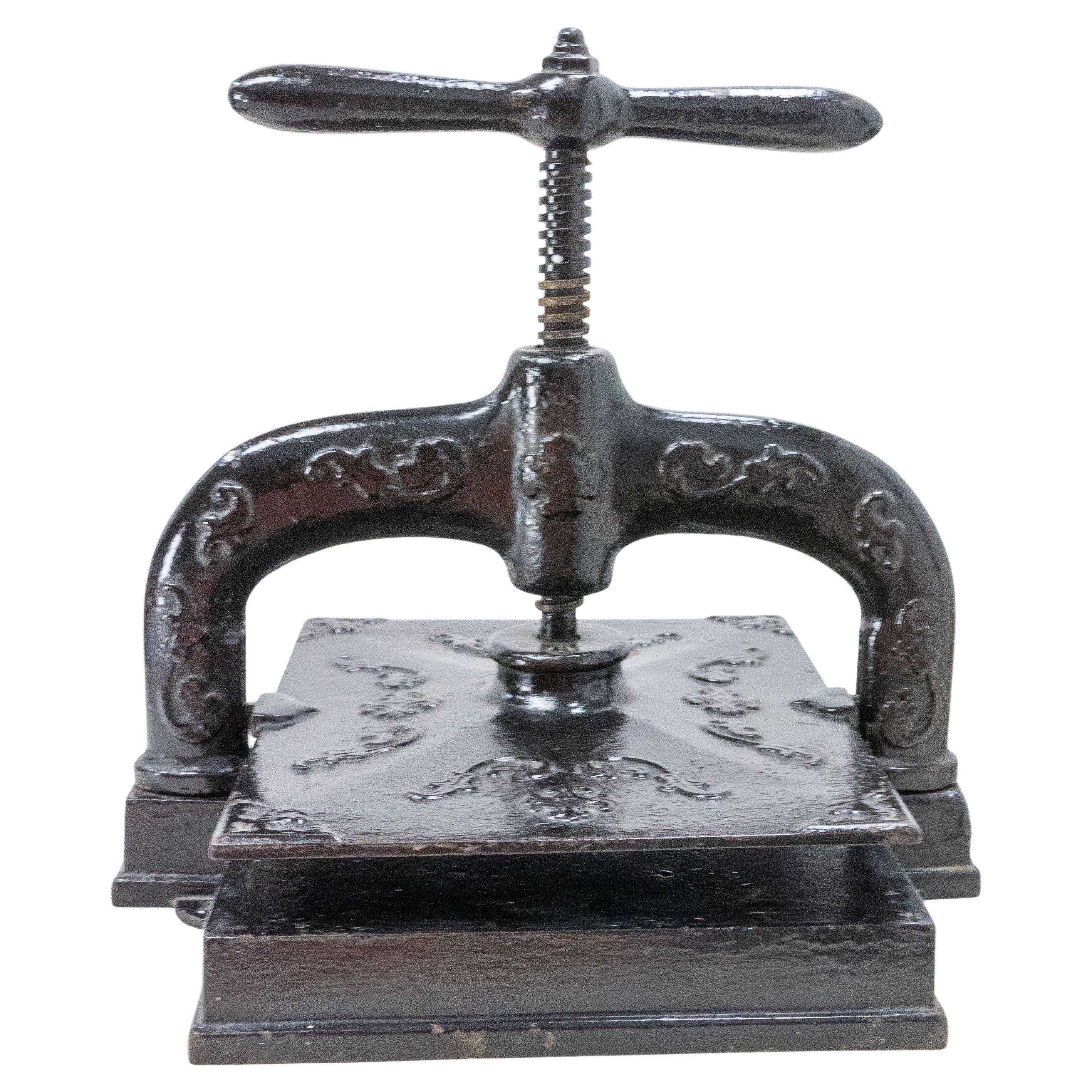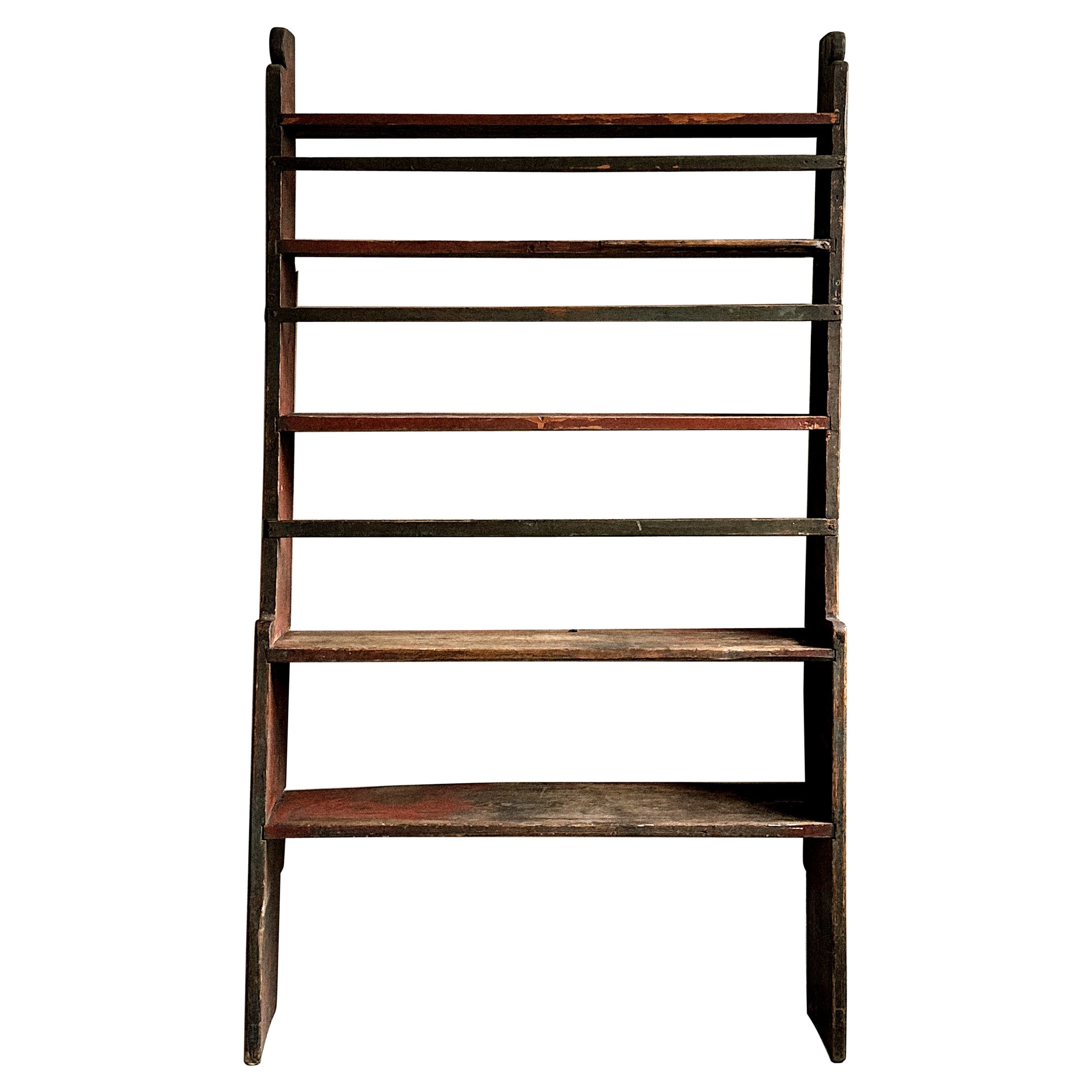Items Similar to Antique Leather Book "Histoire des Plantes", 1865s, France
Video Loading
Want more images or videos?
Request additional images or videos from the seller
1 of 13
Antique Leather Book "Histoire des Plantes", 1865s, France
About the Item
Wonderful rare antique leather book, original from 1865.
"Histoire des Plantes" by Louis Figuier, written in French language.
- Dimensions:Height: 9.45 in (24 cm)Width: 6.7 in (17 cm)Depth: 1.58 in (4 cm)
- Materials and Techniques:
- Place of Origin:
- Period:
- Date of Manufacture:1865
- Condition:Wear consistent with age and use. Very good age-related condition.
- Seller Location:Greven, DE
- Reference Number:1stDibs: LU5419238091232
About the Seller
5.0
Platinum Seller
These expertly vetted sellers are 1stDibs' most experienced sellers and are rated highest by our customers.
Established in 2014
1stDibs seller since 2020
119 sales on 1stDibs
Typical response time: <1 hour
- ShippingRetrieving quote...Ships From: Münster, Germany
- Return PolicyA return for this item may be initiated within 14 days of delivery.
More From This SellerView All
- Antique Leather Book "La Mascarade Humaine", By Gavarni, 1881s, FranceBy Paul GavarniLocated in Greven, DEWonderful rare antique leather book, original from 1881 by Paul Gavarni. Illustrated by Gavarni are: Histoire de politiquer ; Les propos de Thomas Vireloque ; Les Bohèmes ; Manières ...Category
Antique 19th Century French Antiquities
MaterialsLeather, Paper
- Antique Vide Poche, France, 1920s, Snake BiteLocated in Greven, DEExceptional vide-poche with a snake as a holder. Can be wonderfully used for storing small objects on the desk or as a jewelry tray.Category
20th Century Unknown Antiquities
MaterialsBrass
- Antique Bassinoire, Warming Pan, Copper, France, 1880sLocated in Greven, DEBeautiful copper pan from France, a so-called Bassinoire. The lid can be opened with an external lever. This antique form of a todays hot-water bottle was primarily used in aristocr...Category
Antique 19th Century French Antiquities
MaterialsCopper
- Antique Boule Ball "G", Pétanque, 1880s, France, CraftsmanshipLocated in Greven, DEBeautiful, unique Boule ball, France, late 19th Century. In the 19th century, the manufacture of boules balls underwent significant development in France as the game of boules, particularly the pétanque variant, gained in popularity. The manufacture of boules balls during this period was a manual process that required expertise, precision and love to detail. In the late 19th and early 20th centuries, particularly in rural areas of France and other Mediterranean regions, olive wood was a commonly used source of material for making boules balls. This was not only due to the availability of the material, but also to the outstanding properties of olive wood, which was characterized by hardness, strength and a rich grain. First, the olive wood was carefully selected and shaped into raw balls, which were then sanded to the desired size and shape. The nails were then hammered into the balls one by one, making sure that they were evenly distributed and firmly anchored. Finally, the spheres were polished and coated with a protective varnish to enhance their natural beauty and protect them from the elements. The use of nails to decorate and reinforce olive wood boules was a traditional practice that not only gave the ball a rustic aesthetic, but also improved its durability and contributed to customization. Many balls were made according to the specific requirements and preferences of the players. Nails were driven at regular intervals around the ball, with each nail hole precisely placed so as not to affect the balance and weight distribution of the ball. These nails not only served as a decorative element, but also helped to strengthen the structure of the ball and make it more resistant to the hard knocks and wear and tear during play. Individual engravings or decorations were often applied to the balls to make them unique and identify the player. Antique boules...Category
Antique Late 19th Century French Late Victorian Antiquities
MaterialsMetal
- Antique Boule Ball "G", Pétanque, 1880s, France, CraftsmanshipLocated in Greven, DEBeautiful, unique Boule ball, France, late 19th Century. In the 19th century, the manufacture of boules balls underwent significant development in France as the game of boules, particularly the pétanque variant, gained in popularity. The manufacture of boules balls during this period was a manual process that required expertise, precision and love to detail. In the late 19th and early 20th centuries, particularly in rural areas of France and other Mediterranean regions, olive wood was a commonly used source of material for making boules balls. This was not only due to the availability of the material, but also to the outstanding properties of olive wood, which was characterized by hardness, strength and a rich grain. First, the olive wood was carefully selected and shaped into raw balls, which were then sanded to the desired size and shape. The nails were then hammered into the balls one by one, making sure that they were evenly distributed and firmly anchored. Finally, the spheres were polished and coated with a protective varnish to enhance their natural beauty and protect them from the elements. The use of nails to decorate and reinforce olive wood boules was a traditional practice that not only gave the ball a rustic aesthetic, but also improved its durability and contributed to customization. Many balls were made according to the specific requirements and preferences of the players. Nails were driven at regular intervals around the ball, with each nail hole precisely placed so as not to affect the balance and weight distribution of the ball. These nails not only served as a decorative element, but also helped to strengthen the structure of the ball and make it more resistant to the hard knocks and wear and tear during play. Individual engravings or decorations were often applied to the balls to make them unique and identify the player. Antique boules...Category
Antique Late 19th Century French Late Victorian Antiquities
MaterialsMetal
- Antique Boule Ball "G", "J", Pétanque, 1880s, France, CraftsmanshipLocated in Greven, DEBeautiful, unique Boule ball, France, late 19th Century. Decorated with the initials "G" and "J". In the 19th century, the manufacture of boules balls underwent significant developm...Category
Antique Late 19th Century French Late Victorian Antiquities
MaterialsOlive
You May Also Like
- Antique Workshop Book Press Wrought Iron, France, circa 1850Located in Labrit, LandesThis wrought iron book press was made in the late 19th century in France for a workshop Many parts of this object are worked, which makes it a very beautiful piece, very characterfu...Category
Antique 19th Century French Industrial Antiquities
MaterialsWrought Iron
- Antique Workshop Book Press Wrought Iron, France, circa 1850Located in Labrit, LandesThis wrought iron book press was made in the late 19th century in France for a workshop Patina and signs of use which make this antique object very characterful. Shipping: P30 L...Category
Antique 19th Century French Industrial Antiquities
MaterialsWrought Iron
- Wabi Sabi Antique Pine Book Shelf, Scandinavia 1800sLocated in Hønefoss, 30Beautiful antique book shelf in pine. Handcrafted by a Swedish cabinetmaker in the mid 1800s. A great vintage book shelf with a lovely patina. Orig...Category
Antique 19th Century Swedish Romantic Cabinets
MaterialsPine
- Antique Pine Book Shelf, Wabi Sabi , Scandinavia 1800sLocated in Hønefoss, 30Beautiful antique book shelf in pine. Handcrafted by a Norwegian cabinetmaker in the mid 1800s. A great vintage book shelf with a lovely patina. Should be attached to a wall to ensu...Category
Antique 19th Century Norwegian Romantic Cabinets
MaterialsPine
- Bronze & Iron Book PressLocated in Chicago, ILCast iron, bronze and wood book press. Great design.Category
Antique 1880s Italian Antiquities
MaterialsBronze, Iron
- Cast Iron Book PressLocated in Chicago, ILCategory
Vintage 1910s Italian Antiquities
MaterialsIron





